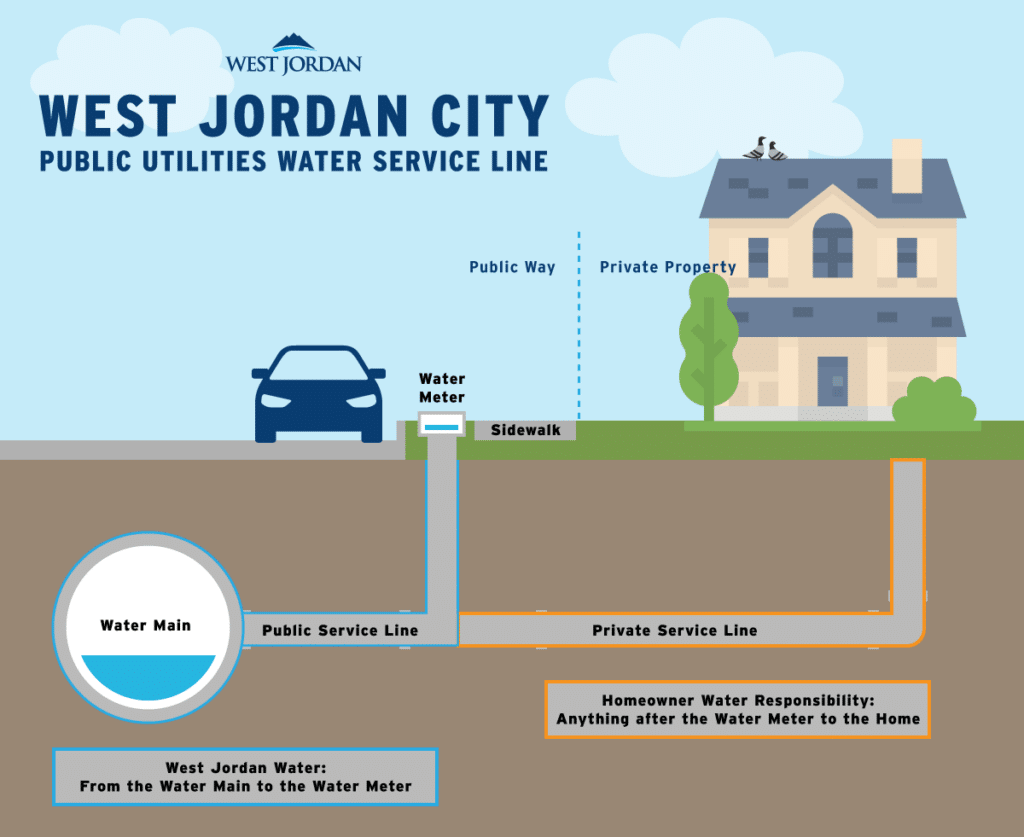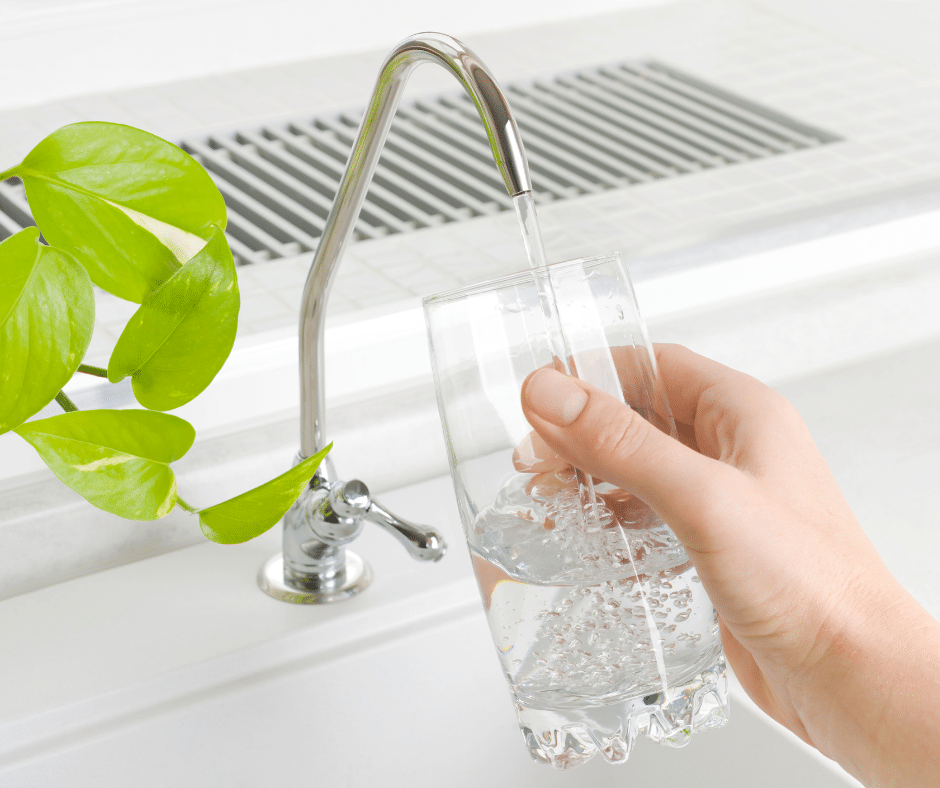View information about your service lateral using this interactive map.
More than 443 miles of water pipe deliver nearly 20 million average gallons of water a day to West Jordan residents and businesses. These pipelines are maintained by the City of West Jordan’s Utilities Department.
Before 1988, lead was commonly used to make water pipes. Our system does not have lead in its water mains or wells. However, lead can enter drinking water through private water pipes, or lead service lines. The City of West Jordan is committed to providing safe and reliable drinking water.
In compliance with the recently strengthened Lead and Copper Rule, West Jordan has embarked on a comprehensive, multi-year effort to increase lead testing, inventory pipe materials, and educate residents on how to reduce lead risk.
If your home was built before 1988, please help us identify what material your service line is. By participating you will know your water service line material and will help West Jordan complete the inventory. If your service line is made of lead, we can help you identify a solution to remedy any problems.
- Find out when your home was built.
- Determine if your water service line is lead, copper, galvanized, or plastic.
- If you have identified the material of your service line or replaced your service line, please take this short survey.
What is a Service Line?

Click here to enlarge image above
A service line is the piping that connects your interior plumbing to the City water main. If it contains lead piping, it is considered to be a lead service line.
Most of our customers share this service line with the City; typically, from the meter to the house is the homeowner’s responsibility, and from the meter to the main is the City’s responsibility. The City’s policy is to remove any known city-owned lead service lines, however much is unknown about the customer-owned service line material.
Do I have a Lead Service Line?
You can inspect your line to identify lead by taking the following steps:
If you have identified your service line or are interested in helping identify your service line, please submit this survey to West Jordan Public Utilities. Some applicants may qualify for a follow-up inspection or water test.
How Can I Reduce Exposure to Lead from Drinking Water?
To make your drinking water safer from lead and copper, follow these steps recommended by the Environmental Protection Agency:
- Flush Your Water: The longer water stays in your pipes, the more lead and copper can get into it. Before you drink it or use it for cooking, run your tap for a few minutes. You can also use water for things like taking a shower, doing laundry, or washing dishes. This helps bring in fresh water from the main supply.
- Use Cold Water: When you cook or make baby formula, use cold water instead of hot water. Lead and copper can get into hot water more easily, so it’s better to avoid it. Never use hot water from the tap for baby formula.
- Replace Old Pipes: If you find out that your home has old pipes made of lead, it’s important to change them. These old pipes can release lead into your water. Also, be careful with brass faucets, fittings, and valves, even if they say “lead-free.” Some of them can still have a little bit of lead. Look for labels that say “lead-free” to be sure.
- Use a Filter: You can use a special filter that’s designed to remove lead. Check the filter’s package to make sure it can do the job. You can also ask independent organizations that test filters to confirm if they work well against lead. Boiling water won’t remove lead, so don’t rely on that.
- Clean Your Faucets: Sometimes, the little screens at the end of your faucets can gather dirt and stuff. Rinse them out regularly to prevent buildup.
- Find Another Water Source: If you discover that your water has too much lead, it’s safer to use a different source of water for drinking, like bottled water, until the lead level is fixed.
More Information on Lead and Copper
To learn more about lead and copper in homes and how to lower your exposure, check out these resources:
- Salt Lake County Health Department – Where You Can Find Lead: This will tell you where lead might be hiding in your home.
- Salt Lake County – Drinking Water: Here, you can find information about your drinking water in Salt Lake County.
- CDC – Lead Poisoning Prevention Program: The CDC (Centers for Disease Control and Prevention) has a program to help prevent lead poisoning. You can find useful information there.
- EPA – Sources of Lead in Drinking Water: The EPA (Environmental Protection Agency) can explain where lead comes from in your drinking water.
- AWWA – Let’s Get the Lead Out Brochure: AWWA is the American Water Works Association, and they have a brochure that talks about how to remove lead from your water. It’s called “Let’s Get the Lead Out.”



